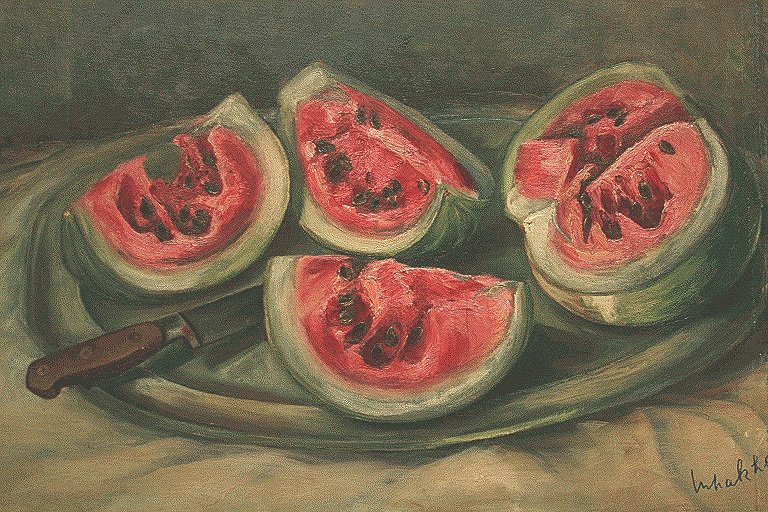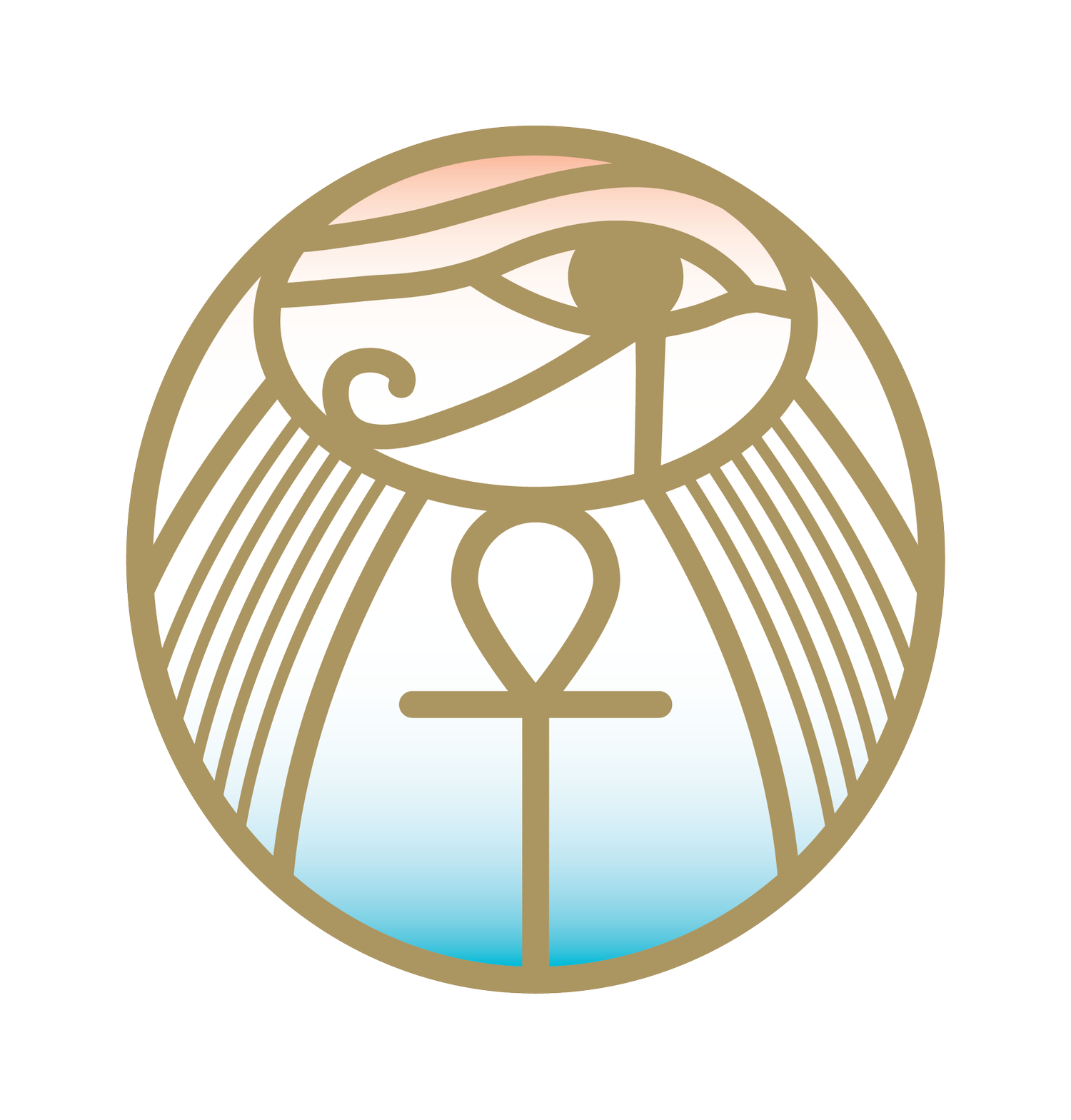
PAINTINGS
In addition to the Biblical scenes by Marguerite Nakhla and Coptic icons, visual arts collections at the Coptic Museum of Canada include paintings by the Copts from the 18th to the 21st century.
2015.7.1
Melon/Melon (1942)
By: Marguerite Nakhla (1908 – 1977)
Oil on canvas 42 x 64.5cm
2015.7.2
Pasteque/Watermelon (1942)
By: Marguerite Nakhla (1908 – 1977)
Oil on canvas 42 x 64.5cm
2015.7.3
Jardin du Luxembourg (1938)
By: Marguerite Nakhla (1908 – 1977)
Oil on canvas 37 x 51cm
This scene of the Gardens of Luxembourg is an example of one of Marguerite Nakhla’s many French scenes in the Impressionist style of the period.
2014.1.1
The Peace Planter (2004)
By: Mina el-Gebaly
Oil on canvas, 61 x 76 cm
Mina el-Gebaly’s artistic work is inspired by his belief that art can provoke people to raise difficult questions about the barriers to peace. Peace Planter is one of his series of three paintings on the theme of peace. The two other canvases titled Peace Dancer and The Way of Hatred are not in the Museum’s collection
2006.12.1
Ink Painting ( 1926), 52 x 66 cm
By: Lemei Abdel Malek
Ink painting on white aquarelle paper.
Arabic text from the Gospel of St. Luke 2:14
Arabic calligraphy text beginning at 6 o’clock: “Glory be to God in the heavens and on earth, peace and good will towards man". The design inside the circle is “Chi (X) Rho (P)” which are the first two letters in Greek for the name of “Christ”, and the Cross.
2006.3.1
Nubian Girl (1990)
By: Kawkab Youssef (1909-2008)
Watercolour,
39 x 25 cm
Dr. Kawkab Youssef taught art education at the Teachers’ Higher Institute for Arts for Women in Cairo long before it became a faculty in Helwan University. Together with Marguerite Nakhla who was a colleague and a close friend, Dr. Youssef was among the Institute’s first teachers. Dr. Youssef was a professor of art education at the Helwan University’s Art Department until she retired at the age of ninety-four. Nubian Girl is one of her many watercolour paintings. The Museum’s Cecil Barsoum Reference Library has a catalogue of all Dr. Youssef’s works.
2013.1. 3
’Irq ’isūs Vendor
By: Isaac Girguis Barsoum
Oil on canvas, 170 x 90 cm
Isaac Girguis Barsoum (1912–1983), a contemporary of Marguerite Nakhla graduated from the Applied Arts College in 1934. Between 1934 and 1972, he taught fine arts in technical schools in Assiut, Tanta, Damietta and Cairo. ́Irq ́isūs is a liquorice drink that dates back to ancient Egypt and was mainly used for intestinal medicinal use. The street-vendor tradition in Egypt, however, probably started in the Ottoman period.
1978.4.1
Yota Cross (ca 1888–1895)
By: His Holiness Pope Macarius III
Watercolour, 130 x 75 cm
This water colour painting on millimeter geometric graph paper was rendered by Pope Macarius III when he was still a monk in the monastery of Anba Bishoy in Wadi el-Natrun (1888–1995). He was known as a manuscript illuminator. The painting was accomplished with a very fine paintbrush. A closer look at the brush strokes will reveal how the Coptic alphabet letter “Ι”, pronounced “e” and called Yota is used to form the shape of all the crosses. The Yota letter is also the first letter in the name “Jesus” and pronounced "Esoos" in Coptic. Thus the reason for calling this style of cross the “Yota Cross.”
2021.1.1
The Flying Priest
(2020)
By: Kirollos Kilada
Oil on board,
50cm x 40.6cm
This painting of Fr. Marcos A. Marcos (1929-2021) titled The Flying Priest the nickname he acquired (after the late-1060s show The Flying Nun) during the first years of his ministry when he travelled extensively to minister to the Copts across Canada and the U.S.A.
The painting was offered by the artist to the Coptic Museum of Canada as it seemed to him “that there is no better destination for the painting than the Museum which Fr. Marcos founded as a manifestation of his passion for Coptic Culture and history… (and Fr. Marcos) created the atmosphere and place that could produce not only a generation of (church) servants, priests and deacons, but the next generation of Coptic artist”.









